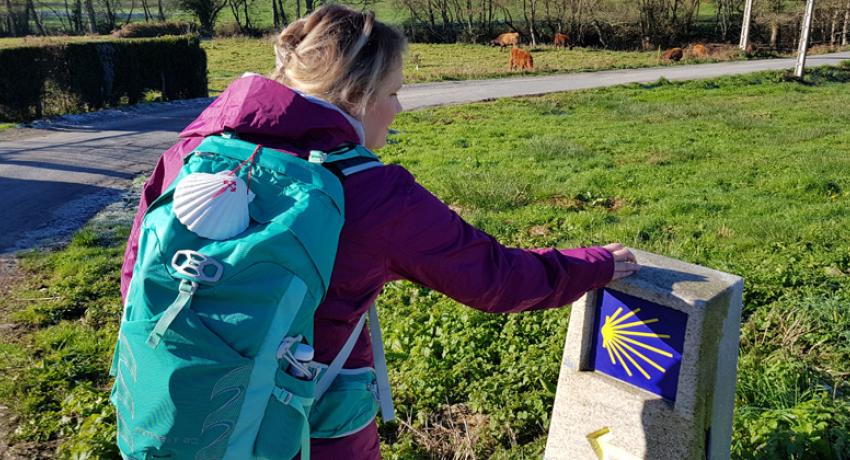Your Camino Rock
Along the Camino de Santiago, you may notice numerous rocks left along the path markers, stacked in formations or in random disarrayed piles. However this display is not just a pile of rocks, but a meaningful tradition perpetuated by many pilgrims.
Carrying rocks on the Camino de Santiago pilgrimage is a meaningful tradition for many pilgrims. I often tell travelers that you’ll walk the Camino 3 times. Once when you begin planning it, once on the path, and once in your memories. The planning stage of the Camino includes getting gear, training for the walk, and collecting and carrying your rock around with you.
Carrying a small stone holds different symbolic meanings and personal significance, but some common reasons for carrying a stone are listed below.
Symbol of Burdens
The rocks may represent the burdens or emotional weight that a traveler carries with them on their journey. By carrying the rock and physically feeling its weight, pilgrims may reflect on their life's challenges and seek a sense of release or healing during the pilgrimage. Once el Camino has provided the healing the pilgrim is seeking, they will leave their rock, symbol of their burdens, behind on the Camino trail and continue their journey.

Looking For an Answer
Many walk the Camino de Santiago looking for an answer to a question. They’ll carry their stone in their pocket ahead of time and think about the question as they continue through their daily life. Once on the route, they ponder the same question in search of an answer, spiritual or physical. When the Camino provides the answer the pilgrims searched for, they deposit their rocks on the Camino route and continue on.
Connection to loved ones
Some carry a stone for those who’ve passed on or are needing healing in their life. They feel the stone is their loved ones accompanying them on their journey. When they’re ready to continue walking on their own, or feel content and at peace, they’ll leave their stone along The Way.

It's important to note that the significance of carrying a rock can vary greatly from one pilgrim to another. The Camino de Santiago is a deeply personal and introspective journey, and individuals may choose to engage in different traditions or practices that resonate with their own beliefs and intentions.
Cruz de Ferro (Iron Cross)
Regardless of intention, there is no specific place the stones need to be left. You will find these piles of stones all over the Spanish routes, but there is one spot preferred by pilgrims. One of the most popular locations to leave these stones is at the base of the Cruz de Ferro, also known as the iron cross. The Cruz de Ferro stands tall between the towns of Manjarín and Foncebadón along the French way (Camino Francés).
Here, the huge wooden pole with the iron cross at its highest point is surrounded by thousands of these small commemorative pebbles. Pilgrims bring stones from all around the world to lay at the foot of the iron cross. Even if you decide to leave your stone behind before this holy place, this centuries old pile of rocks is worth the visit.

Even without carrying a rock with you, the Camino experience has the power to transform a person and provide insight and deeper meaning into your life. Many use the rock as a reminder, but if you are walking just for fun or the challenge, walking the Camino is still a unique transformative experience. Buen Camino!

